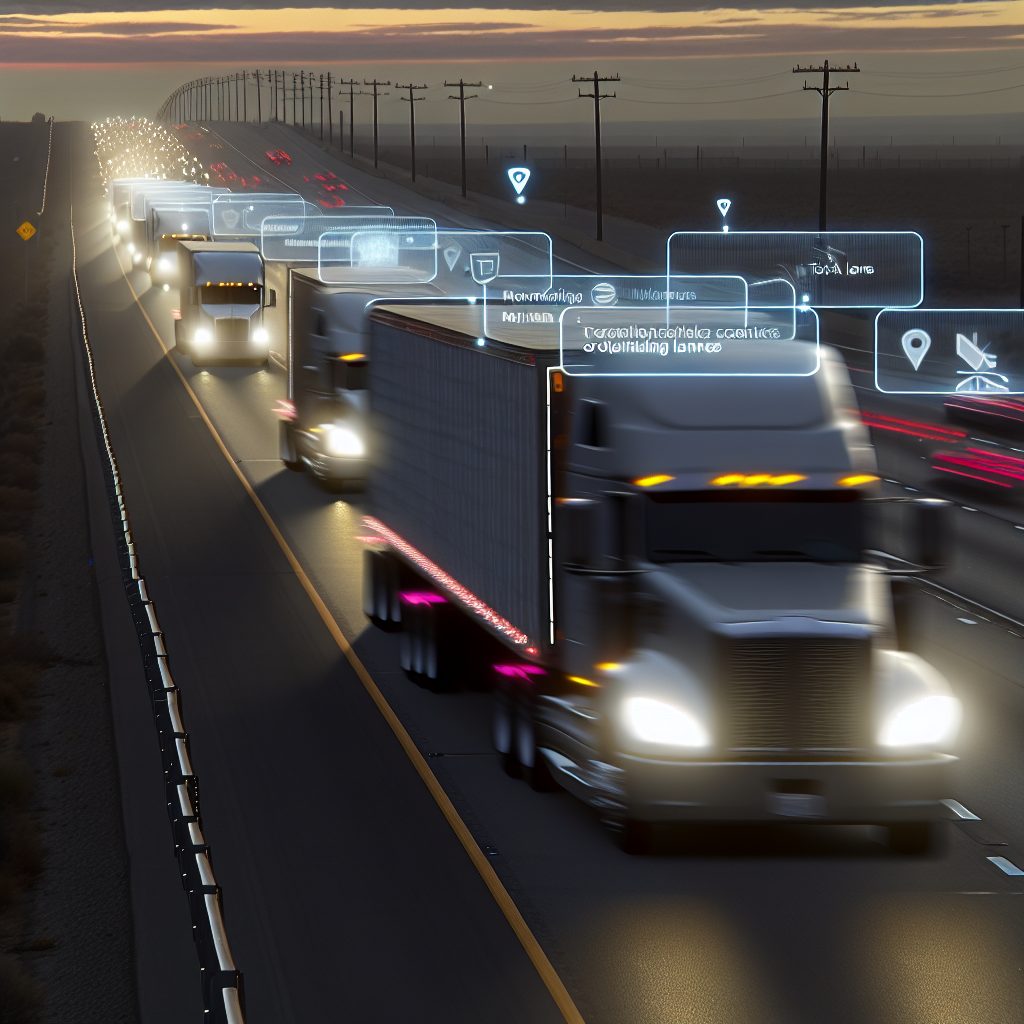NEW ORLEANS — Trimble used its Insight 2025 conference to make its most expansive AI push yet, arguing that the fastest way to ease trucking’s chronic “swivel-chair” inefficiencies is to embed intelligence directly into everyday workflows — not bolt it on after the fact. Executives framed the strategy as a connected ecosystem spanning planning, execution, maintenance and settlement, with AI assisting at each step to cut touches, tighten handoffs and lift confidence in decisions.
The centerpiece is a next‑generation, cloud‑native Trimble TMS built for enterprise fleets. Rather than forcing a rip‑and‑replace migration, Trimble is breaking the system into modules that customers can adopt selectively while running their existing Trimble TMS products. Embedded AI powers functions such as vetting and grading incoming tenders, AI‑assisted load building, automated dispatch decisions and seven‑day forecasts of network balance — the kind of predictive context dispatchers and planners rarely have at the moment they need it. Modules called Order, Capacity, Supply:Demand, Status, Back Office and Control Center are designed to operate as a whole or as plug‑ins, pointing to a phased on‑ramp that limits operational risk.
Trimble also introduced job‑specific AI agents aimed squarely at high‑friction choke points. An Order Intake Agent reads emails, PDFs and EDI to create orders for review inside the TMS — the manual rekeying headache many fleets still endure. A Road Call Agent lets a driver describe a breakdown in plain language and automatically launches the right roadside response. And an Invoice Scanning Agent ingests PDF invoices into TMT Fleet Maintenance to remove back‑office keystrokes. These are narrow problems, but they’re the ones that routinely stall velocity across a load’s lifecycle.
Connectivity is the other pillar. Trimble’s Fleet Hub centralizes driver–back office messaging in a browser‑based interface and integrates with major telematics platforms including Platform Science, Samsara, ISAAC, Geotab and Solera. Trimble says the redesign pushes messages to drivers notably faster — shaving minutes off each exchange — and is meant to reduce the gaps where instructions get lost and dwell grows. On the procurement side, the company is extending its Freight Marketplace, which combines marketplace dynamics with AI‑enhanced carrier vetting; early activity includes loads already fulfilled by Procter & Gamble. For fuel haulers, a new integration between Tandem Concepts and Trimble Fuel Dispatch runs DTN‑powered validations before a truck ever heads to the rack, aiming to cut “no‑load” arrivals and driver detention.
Availability matters, and Trimble offered concrete dates. The Order and Capacity modules of the new TMS are opening for pre‑release trials to current TMW.Suite and Innovative TMS SaaS customers, with a beta of the full end‑to‑end system slated for the first quarter of 2026. The Order Intake Agent is entering a pre‑release period now for TMW.Suite, with broader coverage across Trimble TMS, TruckMate and Innovative targeted for the first half of 2026. Many of the additional agents and integrations are planned to follow in early 2026. For operators, that means pilots can start this quarter — but broad production impact will hinge on next year’s rollout cadence.
Trimble’s leaders also emphasized a shift from bespoke customization to configuration. The message to large fleets: guard against one‑off code that’s hard to support, and instead tune standard modules for your network’s needs. That stance — and the modular packaging — will resonate with carriers and 3PLs that have been burned by multi‑year, over‑customized implementations that never fully stabilized.
Why it matters: after two years of margin pressure and labor constraints, most dispatch and back‑office teams are still juggling email, PDFs, portals and point tools. The practical wins here map neatly to the pain. Automatic order capture reduces the touches that slow order‑to‑cash. A roadside agent shortens the gap from “truck down” to “help dispatched.” A unified messaging hub cuts the latency between plan changes and driver acknowledgement. And AI‑assisted procurement blends carrier verification with capacity discovery so freight can move with fewer phone calls and less risk. If Trimble hits its timelines, these upgrades could take real minutes — not vague percentages — out of critical workflows across large networks.
There are caveats. AI’s payoff depends on clean, connected data, so fleets will need to harden integrations, normalize master data and align exception codes ahead of pilots. Change management will matter as much as model quality: agents that save time on paper won’t land if driver and dispatcher workflows aren’t re‑documented and trained. And while a phased pathway lowers risk, the heaviest benefits arrive when multiple modules and agents are turned on together — another argument for planning 2026 roadmaps now rather than waiting for “finished” software. Still, the direction is clear: the future gains are less about a single killer feature and more about stitching dozens of mundane decisions into one coherent, machine‑assisted flow.
Insight 2025 runs November 16–18 at New Orleans’ Ernest N. Morial Convention Center — an apt stage for a pitch built on connectivity, since success will hinge not just on AI, but on how well Trimble binds partners, data and workflows into something fleets can actually run every day.
Sources: FreightWaves, Trimble Newsroom, Trimble Transportation Blog, PR Newswire, Yahoo Finance
This article was prepared exclusively for TruckStopInsider.com. Republishing is permitted only with proper credit and a link back to the original source.




